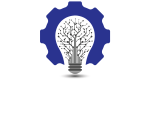Tech Growth Strategies Case Studies
Examples that demonstrate how we can help your business.

Market Segmentation, Ideal Client Identification
Pivot to A New Target Market
Background: A software developer had created an exciting new product but was having trouble getting traction with their initial targeted set of customers.
Discovery process: We sat down with the CEO and leadership team to break down the core benefits of the product, and identified target markets that would benefit the most from these attributes. We also assessed the magnitude of need for the product within each segment, and assessed each segment’s ability to pay for the product.
Outcome: The CEO realized the initial target market was attractive, but another market had an even bigger problem that could be solved, and valued the solution much more strongly. By pivoting to this new market and adjusting the messaging to address the needs of that market, the company received positive customer feedback and grew their pipeline to over $1M within 4 months.

Creating A Successful Pricing and Channel Strategy
Creating Sufficient Margin for Partners
Background: A hardware developer had built a successful business selling niche products directly to end-users. After several years of meager growth, he realized in order to scale he needed to engage channel partners to help sell his product. But after several attempts to engage partners, none seem interested or willing to sell his product.
Discovery: We reviewed his pricing and channel strategy, we had two major discoveries. First, his low unit pricing was largely derived from a markup of his cost of goods, not from the value the product delivered in the market. Secondly, the low sales price left no room for partners to make any money on a transaction, without leaving the hardware company without enough profit margin to survive. So we created a new pricing strategy for an upcoming hardware revision being released later that year, with new elevated pricing that better reflected the value being delivered to the customers. Additionally, this higher price point was sufficient to entice partners to engage in selling the product as well, opening up a new channel of distribution for their product.
Outcome: By simply increasing prices to a competitive level in the market, the company dramatically increased their direct-sales profit margins, drove meaningful indirect sales through partners, and enhanced their perceived market position by having a selling price that correlated to the perceived quality of their product. These changes all occurred without increasing headcount or expenses, so every dollar increase dropped to the bottom line.

Validating Product-Market-Fit
Solving A Customer Problem Not Enough
Background: A service provider in the Hospitality space identified a market gap and assembled a product/service offering to address the need. After successfully piloting with 5-10 clients and receiving good feedback, the firm asked for help with developing a Go-to-Market strategy to fuel significant growth.
Discovery process: While gathering background information to begin to assemble the Go-To-Market plans, a few concerns emerged about details of the offering. To validate the provider’s value proposition, we arranged for in-person interviews with potential prospects to better understand how competitors were solving the problem, and validating the perceived market gap that the provider was trying to solve.
Outcome: During these interviews, we uncovered two companies that were already providing adjacent services to the client’s prospects. These companies had solved a big portion of the customer’s problem, but in a slightly different way. These alternative approaches provided 80% of the benefit of the client’s offering, at a similar price. But already being embedded with the client for other services, they would be hard to displace.
The client was disappointed at the news, but thrilled it was uncovered before significant marketing and advertising money was spent. They pivoted their efforts to focus on the narrow portion of the market that hadn’t adopted their competitor’s “good enough” solutions, and sought to identify other niche gaps in the market.

Ideal Client Definition, Using Personas for Messaging
Improve Sales Close Rates
Background: A service provider in the IT space had deep experience and a loyal customer base but was frustrated by lack of new client growth.
Discovery process: After assessing their offering, their marketing and messaging, and their sales process, we identified a handful of areas for improvement. With a strong desire to increase revenue, they would often engage with any and all prospects they could identify, including companies that didn’t value the experience and capabilities the service provider possessed. With this approach, their close rate was extremely low. So we broke down their offering and identified the underlying business benefits for potential customers. Then we mapped these outcomes to the business types that most required and valued these benefits. By identifying an Ideal Client profile, we could then develop messaging that fit the persona of those clients, with both technical and business-oriented messages.
Outcome: By narrowly focusing on their Ideal Client, with messaging that specifically addressed the personas within their Ideal Client, they immediately improved their lead-generation response and close rates. Additionally they found by not wasting time talking with potential customers that had little chance of buying their offering, they were reducing their overall workload yet increased their new customer revenue.

Created outcome messaging, leveraging client personas
New Target & Messaging Boosts Growth
Background: A high-tech manufacturer was successful and profitable, but was struggling with single-digit growth.
Discovery: After assessing their sales and marketing approach, we discovered they were focusing on the technology aspects of their marketing messaging, as many high-tech companies often do. We broke down their offering and identified the core business benefits that their product & service provided. We identified various customer personas and researched their business challenges and motivations to solve them. We created Ideal Client profiles and market segments that were high-value targets.
Outcome: By simply changing the target of their marketing and using business-focused messaging for their target personas, they saw an immediate increase in prospect engagement and quoting activity. This seemingly simple adjustment led to double-digit growth for three consecutive quarters.

Identifying Ideal Client, Value Prop, and strategy
Adopting Feedback Improves Product
Background: A small start-up developed a security platform, but was having trouble getting initial traction in the market.
Discovery: We helped the company break down their offering and understand what benefits it provided to users, and which customers might need these attributes the most. We also identified other competitors providing similar solutions, and mapped out areas of functionality overlap and points of differentiation. We engaged with potential customers and partners to assess the attractiveness of the offering and positioning. Finally, we developed a pricing strategy that leveraged their differentiation and positioned them appropriately in the market, allowing them to realized much higher profit margins than originally sought.
Outcome: Valuable feedback from the market allowed the company to tweak their product offering to make it more relevant and attractive. Narrowing the focus of marketing and sales to their Ideal Client allowed them to use very targeted messages which appealed to the targeted personas and generated immediate increases in the pipeline. Most importantly, the company felt it finally had a logical plan on which type of customers would be most interested in buying their product, and they stopped wasting effort going after clients that didn’t have a big enough problem for their product to solve.
